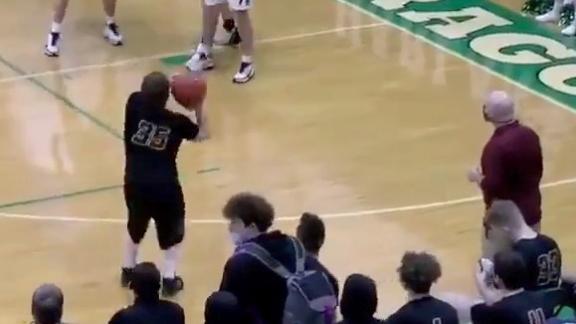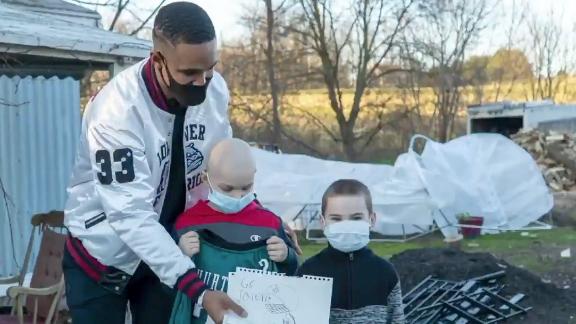VANCOUVER, British Columbia -- If there was any vestige of the Iron Curtain left in figure skating judging and performance, it may have lifted for good Monday as two dynamic, fresh-faced teams from North America took richly deserved gold and silver in Olympic ice dance.
Canada's Tessa Virtue and Scott Moir, the youngest and first North Americans to win the event, formed their own version of the power play in the Pacific Coliseum with a top-shelf performance that combined the discipline's traditional flair and elegance with demanding footwork and breathtaking lifts. The total package demonstrated just how much the standards of the revamped scoring system have forced ice dance to evolve, yet still stay distinct from the more acrobatic pairs event.
Virtue and Moir paused at the foot of the podium to accept perhaps the longest and most heartfelt hugs ever delivered by runners-up: Meryl Davis and Charlie White of the United States, their training partners at the Arctic Figure Skating Club in Canton, Mich., outside Detroit. Among the sea of maple leaf flags was a lone maize-and-blue block-M, a nod to the fact that Davis and White are both enrolled at the University of Michigan.
Davis and White, skating to a medley from "Phantom of the Opera," projected youth and verve in a high-rpm program that required so much effort that White looked completely gassed afterwards.
Since ice dance was added to the Olympics in 1976, the discipline has been questioned for its intrinsic sporting value, justifiably ripped for bizarre costuming, and widely viewed as the playground of corrupt officials. Some teams, most notably the transcendent British tandem of Jayne Torvill and Christopher Dean, overcame those issues with their excellence, but when ice dance figured into the judges' vote-swapping scandal in Salt Lake City in 2002, every fan's most paranoid suspicions were confirmed.
The North American teams that finished 1-2 on Monday went a long way toward dispelling all those prejudices. Their choreography was beautiful and precise, yet their programs also clearly required considerable strength, balance and fearlessness. Most importantly, as Moir said, "You get rewarded for exactly what you do" under the current, more finely calibrated scoring system as opposed to the old 6.0 regime.
"If you don't like your marks, you look at them on a piece of paper and go home and improve on it," Moir added. In the old days, it would have been more tempting to go home and wonder which countries had formed alliances at the judges' table.
"What I think we're seeing is the next generation who have grown up with the new system," said Skate Canada CEO Bill Thompson. "They're able to take all the technical difficulty, meld it into the program, and they're all raising it to a new level. The kids who grew up with the new system are jelling."
Ice dance is never going to be arena football. The final order of the top 12 teams after the free dance was identical to what it had been after the original dance the previous day, and sudden momentum swings will likely remain rare. But at the very top, the skaters have more confidence that they're participating in an actual competition rather than a geopolitical personality contest.
The gold- and silver-winning duos, both in their early 20s, also grew up together. They were paired as children in the same year, 1997. Unlike some legendary dance teams of the past, they aren't romantically linked, but their chemistry is still sensational. Among those in the audience who was glowing with pride: Seth Chafetz, the coach who first put Davis and White -- then a pint-sized kid with chubby cheeks who was taking figure skating lessons to improve his hockey skills -- together at the Detroit Skating Club when they were 9 and 8 years old, respectively.
"Meryl was the only girl small enough, and she was the best skater in the rink," Chafetz said.
White's father, Charlie Sr., said his son lucked into a partner who complements him perfectly both athletically and personally. Davis helps ground the more outgoing White, while White has helped the more reserved Davis deal with the spotlight, he said. And the support they've received from Virtue and Moir -- dubbed the "Canton-adians" by Detroit Free Press sportswriter Jo-Ann Barnas -- shouldn't be discounted, White Sr. said.
"Their friendship is not just made up for the media," he said. "It's genuine."
Ten gold medals have been awarded in Olympic ice dancing. Virtue and Moir were just the third non-Russian team to win one. Although the North American teams have worked together to break Russian hegemony in ice dance, both are coached by the same Russian coaches, Igor Shpilband and Marina Zoueva. In a sense, the competition still reverts to Russians, since the suburban Philadelphia-based husband-and-wife teaching duet of Natalia Linichuk and Gennadi Karponosov -- gold medalists for the former Soviet Union themselves in 1980 -- train the teams who finished third and fourth Monday.
Oksana Domnina and Maxim Shabalin of Russia won the bronze medal, and their training partners, Tanith Belbin and Benjamin Agosto of the United States, finished fourth. Belbin and Agosto, who broke through to win the first ice dance medal for the U.S. in 30 years at the 2006 Torino Games, were coached by Shpilband and Zoueva at that time.
At the conclusion of the evening, Shabalin was asked a question that would have been unthinkable a decade ago: What do the Russian teams have to do to regain their supremacy? He leaned into the microphone and intoned, "I think we have to take all the Russian coaches back to Russia."




